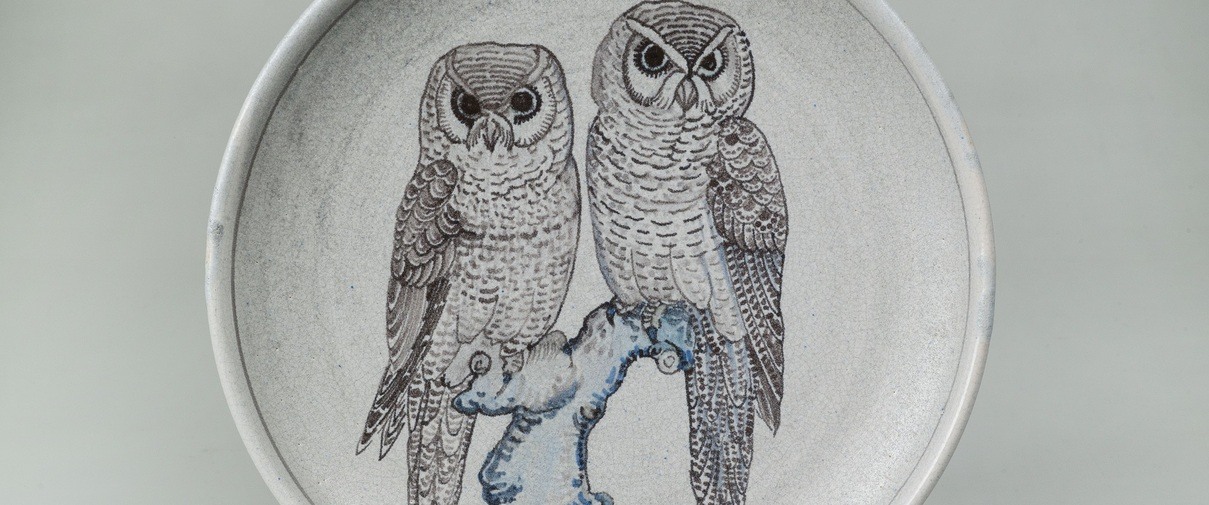Crisis plate
Crisis ceramics
How inventive do you have to be as an artist to still make ends meet in times of crisis? Sell your work, choose a different genre or adapt to the public's taste? Chris Lanooy, one of our most famous ceramists of the twentieth century, undoubtedly asked himself these questions when the stock market crash of 1929 heralded a period of great unemployment and poverty. He found the solution in a series of special 'crisis plates', which he brought onto the market in 1931 - 1932.
Chris Lanooy (1881 - 1948) began his career as a pottery painter at various factories. There he painted vases and other decorative pottery with decorative motifs such as flowers, fish, dragons and butterflies. He proved to have a special talent for drawing. Nevertheless, around 1908 he decided to turn his back on figurative decorations on ceramics. In the meantime he had established himself as an independent potter in Gouda. Lanooy created his vases and bowls by hand and covered them with colourful glazes that he composed himself. He experimented endlessly in his studio to create new glaze effects. And he did so with great success. From the outset he was given the opportunity to exhibit his work, such as in 1910 at the World Exhibition in Brussels and, in the same year, at an exhibition in New York, where Mondriaan was also represented. The solo exhibition in the Stedelijk Museum in Amsterdam that he was granted in 1914 marked his major breakthrough. He was 33 at the time. Nanne Ottema, the founder of the Princessehof National Museum of Ceramics, also bought ceramics from Lanooy at an early age, and he continued to do so until his death. In Lanooy's work he saw a direct relationship with the centuries-old Chinese and Japanese 'glazed ceramics' that he had in his collection.
